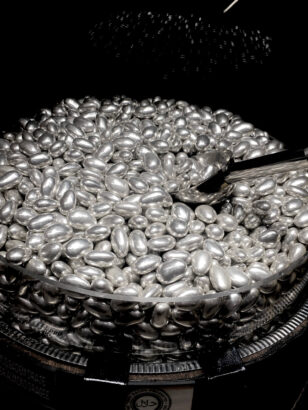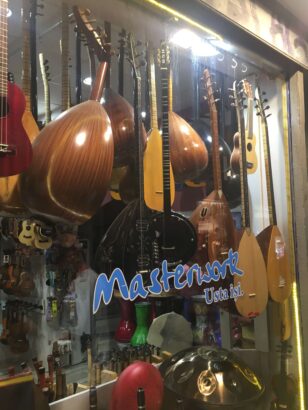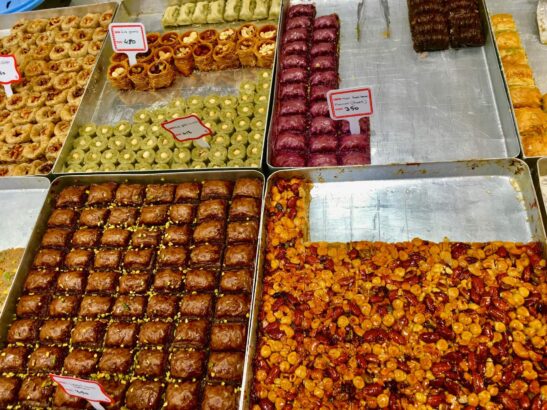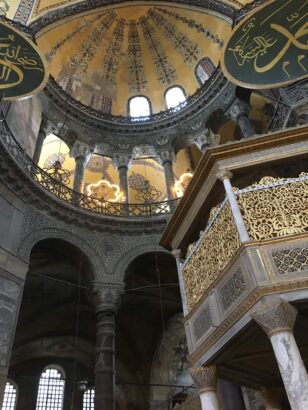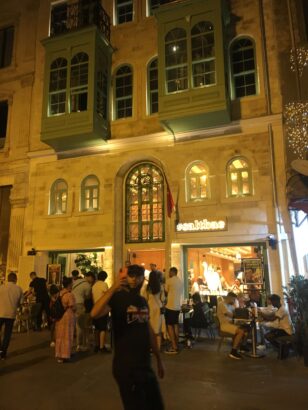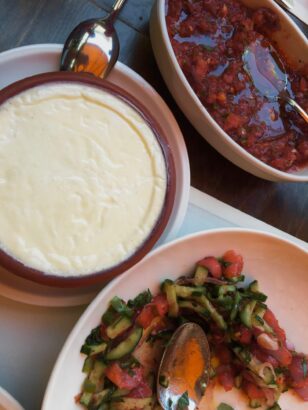To walk from Pera Palace Hotel—Istanbul’s ornate, 130-year-old grand dame—along Istiklal Avenue to Taksim Square without stopping would take less than 20 minutes; it’s just shy of a mile. But not stopping to enjoy its charms would be inconceivable. Plan on a couple of hours because to hit Istiklal Avenue is to immediately understand that you’re in the heart of the city—“colorful” and “vibrant” are words too weak to describe the joys and sensory pleasures of this pedestrian street in the Beyoğlu District, on the European side of the city.
Istiklal has been the name of the avenue for exactly a century; before 1923, it was known as the Grand Avenue of Pera. Yet grand isn’t the first word that comes to mind—not in the “stately” sense—despite the impressive architectural range of its buildings, which includes beaux arts, neo-Classical, neo-Gothic and Renaissance revival. Instead, Istiklal Avenue feels more like a civilized street party, with the lack of cars and scooters a blessing.
Festive during the day, nighttime is when the real magic happens. Everyone looks to be in a good mood, almost deliriously so, the convivial mix of tourists and locals enchanted by each other and by the jewel-like storefronts. Revelers weave their way past open carts displaying roasted ears of corn—and skillets filled with mussels and topped with whole lemons. The huge steel pans overflowing with nature’s black and yellow bounty are ubiquitous in Istanbul and in streets throughout the country, as are the fruit stands holding perfectly stacked rows of open grapefruits, oranges and pomegranates, their juicy ruby-red seeds catching the glow of the streetlights.
The shops along Istiklal Avenue are riots of vast varieties of powdered Turkish delight; lovingly gift-wrapped milled soaps (made from goat’s milk, olive oil, grapeseed and strawberry); and glass bowls and wooden treasure chests filled to the brim with licorice, and almonds dipped in chocolate and confectioners’ gold and silver. (Captain Candy is one of many such shops.) Mandolins of all shapes and sizes hang from the ceiling of a musical instrument shop called Masterwork. Yes, Istiklal Street is a draw for travelers, but its authentic texture is undeniable—and intoxicating.
Lording above the Beyoğlu throngs is the cylindrical, conical-roofed Galata Tower, a Romanesque landmark that dates from 1348. You can almost reach out and touch it when dining at Firuzende Galata, a posh place with one of the most spectacular terraces in all of Istanbul. The traditional dishes—hummus, mutabbal (a garlicky version of baba ghanoush), and Craten paste (mixed cheeses with pistachio)—are fresh and earthy.
There’s no reason to rush—stay and linger on the terrace with a cocktail in hand. Pera Palace—by now you’ve realized it’s the best-positioned hotel in Istanbul—is only a 10-minute stroll away. Or, if you do it right, letting your eyes fill up with the night, a bit longer.
What You Shouldn’t Miss in Istanbul—From the Obvious to the Less-So
Cağaloğlu Hammam: The last bathhouse to be built during the Ottoman Empire is a hot ticket. Book in advance for a combination treatment: a sauna, a rubdown with a kese (traditional glove) and a bubble bath. The experience ends with Turkish tea, house-made sherbet and Turkish delight.
Oryantal 1741: A restaurant atop a hammam might not automatically signal gastronomy, but this eatery above Cağaloğlu offers top-notch meze like local cheese spreads, za’atar tomatoes and haydari (a
strained yogurt dip with herbs and spices). Various pide (the Turkish version of pizza) can be topped with marinated lamb or halloumi cheese.
Hagia Sophia: Dating from 537 AD, this breathtaking structure—first a church and later a mosque—was the largest cathedral in the world for nearly 1,000 years. The domes upon domes, the massive green stone columns, the Byzantine mosaics—the structure is an enigmatic marvel of construction.
Çirağan Palace Kempinski: A trip to Istanbul wouldn’t be complete without at least one dinner overlooking the Bosporus Strait, which separates Europe and Asia. Make time to walk the magnificent grounds of this legendary hotel with its shimmering waterfront pools before settling down to a seafood dinner at Bosphorus Grill.
Cevizli Baklava: You’ll see baklava everywhere in Istanbul, and the quality is consistently high. But to become a connoisseur, be sure to sample several types, from cevizli with walnut (prepared with 40 layers of phyllo dough) to burma (the rolled and twisted version).
Pera Palace: Nothing can beat this hotel for its opulence and history. Suites are named for Greta Garbo, Alfred Hitchcock and Jacqueline Kennedy Onassis. Legend has it that Agatha Christie wrote Murder on the Orient Express here, and there’s a room named for her, too. Istanbul’s first electric elevator—an evocative caged affair fashioned from wood and cast iron—is still here, but Pera Palace also features modern amenities like an indoor pool and Jacuzzi and Technogym workout equipment. The hotel’s glittering Patisserie de Pera is as captivating as it is unexpected.
Photos by Drew Limsky



